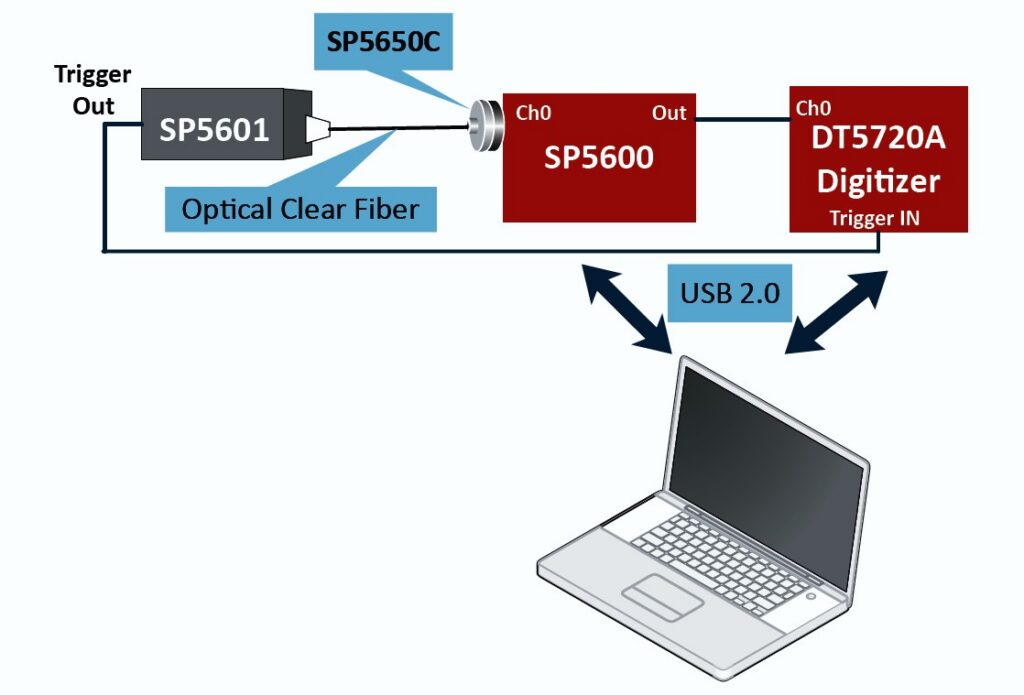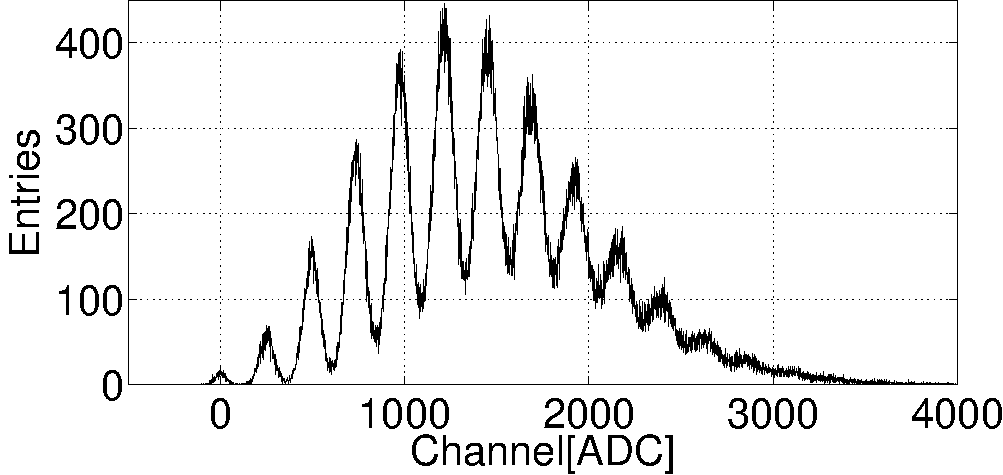| Difficult | Execution Time | Data Analysis | Radioactive Sources |
|---|---|---|---|
| No | No |
Hardware setup
This experiment guide is referred to the SP5600E/AN Educational Kit.
Equipment: SP5600E – Educational Photon Kit
| Model | SP5600 | DT5720A | SP5601 | SP5650C |
|---|---|---|---|---|
| Description | Power Supply and Amplification Unit | Desktop Digitizer 250 MS/s | LED Driver | Sensor Holder for SP5600 with SiPM |
Purpose of the experiment
Exploring the quantum nature of light thanks to bunches of photons emitted in a few nanoseconds by an ultra-fast LED and sensed by a state-of-the-art detector, a Silicon Photomultiplier (SiPM).
Fundamentals
In the XVII century the concept of wave-particle duality was developed, starting from the wave nature of light postulated by Huygens to the Einstein Photoelectric Effect, which postulates light quanta existence. A basic principle of quantum mechanics is complementarity: each quantum-mechanical object has both wave-like and particle-like properties. With this approach the photon is at the same time wave and particle, but they can never be observed simultaneously in the same experiment, not even if the uncertainty principle is successfully bypassed.
Carrying out the experiment

Experimental setup block diagram
- Plug in the SP5650A into one channel of SP5600 and connect the analog output to DT5720A channel 0.
- Remove the protection cover of the SP5601 and SP5650A, spread the optical grease on both ends of the optical fiber and connect them.
- Use internal trigger mode on SP5601 and connect its trigger output on the DT5720A trigger IN.
- Connect via USB the modules to PC and power ON the devices.
- Use the default software values or optimize the parameters to acquire the light spectrum.
In the spectrum of the SiPM response to a light pulse, every entry corresponds to the digitized released charge, measured integrating the electrical current spike during a predefined time interval. The peaks correspond to different number of cells fired at the same time by incoming photons.
Results
This detector can count the number of impacting photons, shot by shot, allowing to observe how the light is composed by photons. Moreover the SiPM measures the light intensity simply by the number of fired cells.

Spectrum of the sphotons emitted by a LED Driver and detected by a Silicon Photomultiplier


